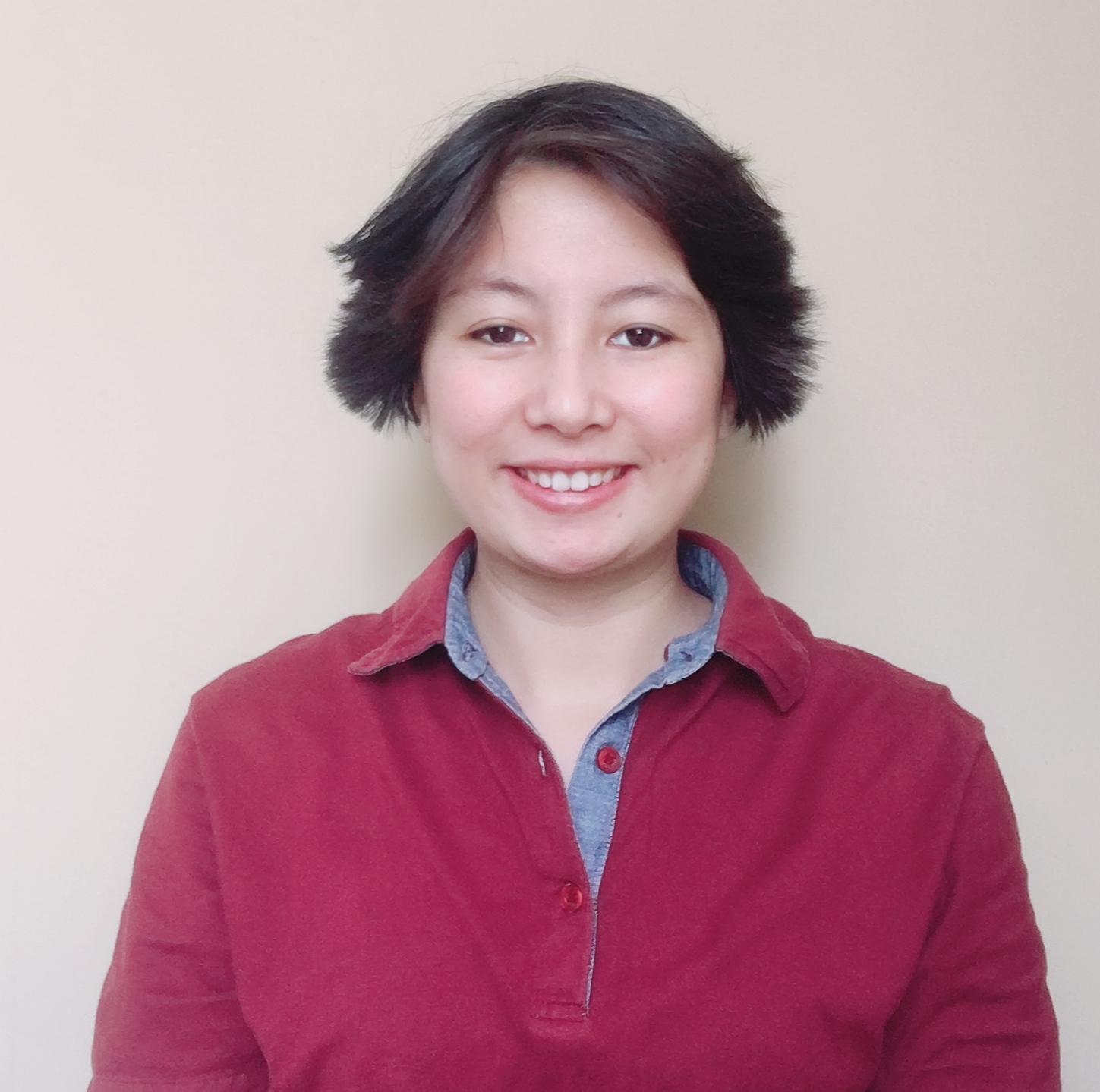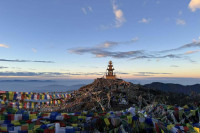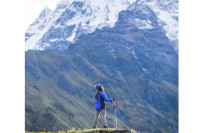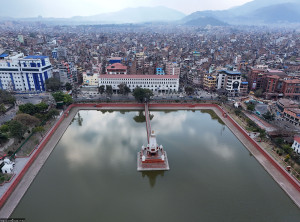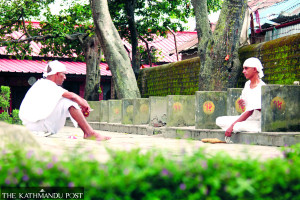Travel
Change is slowly seeping into ancient Bungamati
This old Newar settlement south of Kathmandu is a quick getaway from the hustle of city life, but its charm is possibly being chipped away.
Srizu Bajracharya
As the Valley’s hustle slowly starts to fade, the road to Bungamati comes in view and exudes calm. The monsoon’s incessant drizzle shrouds the Newar town in a faint mist, but the petrichor springing from the damp earth is invigorating. Many locals, perhaps because of the gloomy weather, seem to have slowed in their usual drills; they aren’t in a hurry to reach anywhere.
Instead, they are musing on their small world which is visited occasionally by trickles of outsiders. People here, every time they meet your gaze, greet with a smile; some shake their head, as if to say “I hope you are doing well”.
Though there’s a different appeal to how the murky weather embraces this ancient town, it is perhaps not the best day to travel to this quaint place. With the Asaare budget drawing to an end, some men and women busy themselves by fixing pipes in the rain, and because of it, the outskirts of the Bungamati courtyard is muddy and swamped with huge puddles.
A stranger could misunderstand the chaos of this place, as reconstruction of the 6th century Shikhara-style Rato Machhindranath temple continues. The temple used to be Bungamati’s highlight, but was destroyed in 2015’s earthquake. Now red deity Bunga dyah rests in a temporary structure, watching the stalled construction.

It’s been four years, but Bungamati’s central courtyard remains in shambles. Even the old houses are still being built. The silent court feels slightly ominous today given clouding uncertainty—will the place ever be the same as before?
But for many, this phase may be an exciting experience too. A horde of Korean students pass by with notebooks and cameras. Some of them try hard not to dredge their legs deep in the thick, soggy mud. To them, Bungamati, especially on a gloomy day like this, might feel messy. But it is still graceful, in spite of the chaos.
The northern door of the courtyard trails down to the Bunga people’s settlement. There was a time when every house in their cheli hosted wood-carving men whittling traditional cuts from wood. Today, the view isn’t the same.
“There were more than 200 houses doing woodcraft, but people are no longer interested in this business because it’s not fruitful. But I continue at it because it’s necessary. What will become of this place without its traditions?” says Puni Raj Tuladhar, a Bungamati local who owns Mahankal Wood Carving.
Bungamati has changed. Anyone who has been to the place before will notice the concrete houses’ new colours, and homes attempting to resemble traditional Newar structures. Many locals still hold on to their culture and festivals, but change is quiet and, evidently, seeping in.

It’s evident locals understand their traditional Newar settlement’s beauty, and are not willing to let go. This is apparent in their determination to incorporate resting spaces for people, phalachhas, in the town’s ongoing reconstruction. It’s visible in their conflict with the government about the reconstruction of the Rato Machhindranath Temple.
“The government should have sought experienced local helping hands. After all, we know more about the place than they do,” says Niran Tuladhar, a young Bungamati local. Tuladhar, one of few young woodcarvers in Bungamati, says it’s always part of conversation.
Not far from the cobbled stairs, towards Bungamati Kota Tol, many stop by at Windows and Wood Carving Center, where Bungamati’s Living Goddess resides. Kripa Bajracharya, the current Kumari, is just like any other child, except she’s a revered deity, dyahmaiju, who needs to follow a particular way of life.
She drags along her Japanese manga Doraemon toy to show to one of her visitors. After her visitors bid her farewell, she hurries back to the other room to watch TV. The Kumari in Bungamati is selected from a Bajracharya family—the title has been passed down one of the oldest Bajracharya family trees in Bungamati.
Around noon, music in Bungamati reverberates. On one corner, young people sing along to a popular PubG rap song on the radio. No one seems to be bothered by the volume coming from this young rabble. Most young people have left for plantation, some to their office in the city.
“It’s usually empty around this time, many are in the fields today,” says an old woman, breaking away from her reverie.
A little up from Dev Pokhari, one will find the Bungamati Cultural Museum inside Maharjan Samaj Guthi. “We are still setting up, so we haven’t come up with any promotions yet. But this place has always been here,” says Ranjana Maharjan, the desk person at the museum.
It smells of wet cement, and voices of construction workers echo through the space. Even so, one is drawn to the old Newar artefacts, such as the ancient cooking utensils, manuscripts, big ghampos and Pujari’s apparel at the first floor. Photos display what Bungamati was known for the most: the Bunga dyah Jatra, or the Rato Machhindranath Jatra, which captures the spirit of the Newar town.

Many come to devour authentic Newar food and aila, the smell of which wafts through the gallis of Bungamati. In nearing small Newar khaja ghars, the smell of mustard and aila is overpowering. Raju Newari Khaja Ghar, a little down from Bungamati’s bus park, is one that is very popular among other eateries. The only thing that seems to have remained unchanged in Bungamati is its food. Residents are slowly coming to realise the only constant in life is change.
Even Champi, a small hill above Bungamati, is developing. Many people come here to enjoy breezy rides permeated with wafts of green. Those who have been here will notice that Champi Devi now is housed in a proper temple, and above it, vast swathes of green fields have been scrapped for a football field. The only thing left is a lonely tree, perhaps more than 100 years old.
Today husband and wife Gyan Bahadur Karki and Ful Maya Karki sit on a bench under that tree. “We came here to rest because this place feels like our Okhaldhunga, but I just heard that they are turning this place into a bus park,” says Gyan Bahadur Karki. As the elderly couple meander away, tiny droplet tap the tin roof. “It’s going to rain, we’ll head home now,” says Ful Maya.
Here the city’s hustle is still faint, but one can gaze at Bungamati’s transforming landscape. On the slope leading to Bungamati, a chain of houses splays forth, foreshadowing a waning taste of antiquity. The nostalgia Bungamati invokes is fading.

What do you think?
Dear reader, we’d like to hear from you. We regularly publish letters to the editor on contemporary issues or direct responses to something the Post has recently published. Please send your letters to [email protected] with "Letter to the Editor" in the subject line. Please include your name, location, and a contact address so one of our editors can reach out to you.




 25.53°C Kathmandu
25.53°C Kathmandu